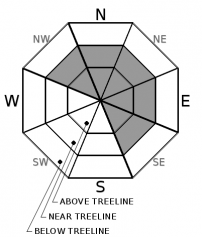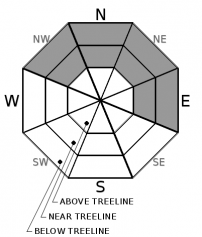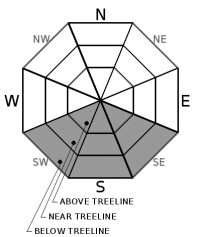| Saturday | Saturday Night | Sunday | |
|---|---|---|---|
| Weather: | Mostly cloudy then becoming partly cloudy. Snow levels below 7000 feet. Chance of precipitation is 0%. | Partly cloudy. Snow levels below 7000 feet. Chance of precipitation is 0%. | Partly cloudy then becoming mostly cloudy. Snow levels below 7000 feet. Chance of precipitation is 0%. |
| Temperatures: | 38 to 44. deg. F. | 18 to 23. deg. F. | 38 to 44. deg. F. |
| Mid Slope Winds: | Light winds. Gusts up to 25 mph in the morning. | Light winds. | Light winds. |
| Expected snowfall: | No accumulation. | SWE = none. | No accumulation. | SWE = none. | No accumulation. | SWE = none. |
| Saturday | Saturday Night | Sunday | |
|---|---|---|---|
| Weather: | Mostly cloudy then becoming partly cloudy. Snow levels below 7000 feet. Chance of precipitation is 0%. | Partly cloudy. Snow levels below 7000 feet. Chance of precipitation is 0%. | Partly cloudy then becoming mostly cloudy. Snow levels below 7000 feet. Chance of precipitation is 0%. |
| Temperatures: | 34 to 40. deg. F. | 19 to 24. deg. F. | 37 to 43. deg. F. |
| Ridge Top Winds: | Southwest 15 to 25 mph. Gusts up to 45 mph decreasing to 35 mph in the afternoon. | Light winds becoming southeast around 15 mph with gusts to 25 mph after midnight. | East 15 to 25 mph. Gusts up to 25 mph increasing to 40 mph in the afternoon. |
| Expected snowfall: | No accumulation. | SWE = none. | No accumulation. | SWE = none. | No accumulation. | SWE = none. |





























